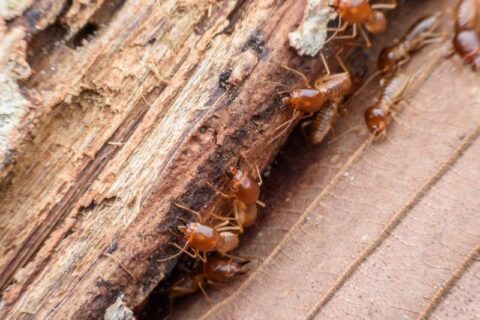Everything You Need to Know About Termite Inspections
Everything You Need to Know About Termite Inspections
Termites are common, and each year, about 600,000 homeowners have to deal with termite damage. Termites can do a great deal of damage to a home before the homeowners even realize they have an infestation. A good way to avoid termite damage, then, is to have a termite inspection performed every year.
What is a termite inspection? It is exactly what it sounds like an inspection looking for termites and other wood destroying organisms in or around a house. You can inspect your home yourself, but it’s a much better idea to have it professionally done because termite inspectors know what to look for and can find things you would be likely to miss. So, what is a termite inspector looking for?
- Hollow sounding wood
- Wood damage
- Pinholes in walls
- Termite waste, which looks like wood shavings
- Dents in drywall, doors, or window and wall facings
- Mud tunnels on the outside of the house, usually near the foundation or a crack in the home’s structure
- Termites
- Discarded termite wings in window sills, around doors, and in crawl spaces
- As well as other signs that are conducive to infestations
Termite inspectors will look for termites in spots where they are likely to be, based on the termite species common in the area. Subterranean, for instance, can be found along the inside and outside perimeter of a house, particularly the lowest level, foundation, basement, accessible attics, and crawlspaces. When looking for drywood termites, on the other hand, an inspector will look at exposed wood, hardwood floors, attics, crawlspaces, and eaves. If an area the termite inspector wants to check is not accessible, he or she will make a note of conditions in the area and discuss methods of providing a more comprehensive inspection. Termite inspectors will also inspect exterior wooden surfaces, like sheds or gazebos.
How much does a termite inspection cost? The good news is that, in most cases at MightyMite Termite, termite inspections are free. The inspector will offer you advice on how to keep termites away from your home and suggest treatment if necessary. If you do not have termites, we can offer preventive treatment to forestall an infestation.
At MightyMite Termite Services, we’ve earned a reputation as experts in California termite control. We perform termite inspections to ensure that your home is free of termites and work hard to help you keep it that way, using treatments that are naturally derived and have a low impact on the environment. We diagnose and treat infestations with the most effective methods and unmatched warranties, solving your termite problems the first time, with the industry’s best “no call-back rate.” That, combined with our experience, technology, and highly trained professional staff, makes us the leading extermination company in the Bay Area. We understand that your home is your most important investment, so we work hard to provide excellent service, utilizing best practices to solve our customers’ termite problems. For more information, email Info@mightymitetermite.com, call us today at 408.335.7053, or contact us through our website.








